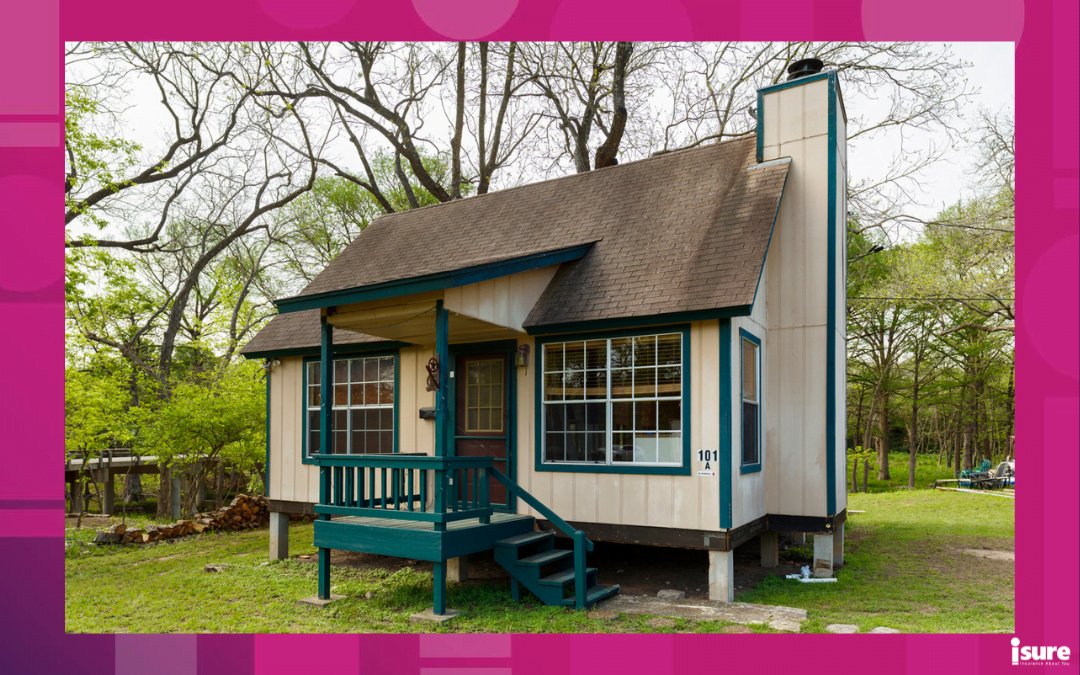With the growing interest in tiny homes, more and more people have started purchasing them. This has led to the creation of tiny home insurance. Tiny houses are typically smaller and less expensive than traditional homes. Still, they require adequate insurance coverage to protect you against potential risks and losses. Let’s dive into everything you need to know about insuring your tiny home.
What is Tiny Home insurance?
Tiny home insurance is a policy designed to cover the unique risks of living in a small home. Typically, a tiny home is between 100 and 400 square feet. These policies typically cover property damage, liability, and personal belongings, just like a traditional homeowners insurance policy. However, they may also include additional coverage for things like towing and transportation, as well as unique features and materials commonly found in tiny homes.
Why do you need Tiny Home insurance?
If you own a tiny home, it’s essential to have adequate insurance coverage to protect your investment. Even though tiny homes are smaller and less expensive than traditional homes, they can still be damaged or destroyed by fire, theft, or other unexpected events. Without adequate insurance for a tiny house, you can be left with the financial burden of repairing or replacing your tiny home and any personal belongings that are damaged or lost.
In addition to property damage, tiny home insurance also provides liability coverage. You can be liable for medical expenses and other damages if someone is injured on your property. With liability coverage, you’ll have financial protection against these claims. Finally, tiny home insurance also provides coverage for personal belongings. This is especially important if you live in your tiny home full-time, as you’ll likely have valuable personal items you want to protect inside.
Tiny Home insurance coverage
Although joining the tiny home movement offers several advantages and benefits, homeowners should know that there are also some challenges. Coverage provided by a tiny home insurance policy will vary depending on the insurer and the specific policy you choose. Tiny houses do not adhere to rules created for traditional structures, so their unique traits, including size and mobility, make them ineligible for conventional homeowner’s insurance. Builders of tiny homes also have to satisfy strict guidelines, including those of the Canadian Standards Association (CSA).
However, most policies will include coverage for the following:
Property damage
This coverage will protect your tiny home and any attached structures (like porches or decks) from damage caused by covered events, like fire, storms, or vandalism.
Liability
This coverage will protect you if someone is injured on your property or if you cause damage to someone else’s property. It typically covers medical expenses, legal fees, and other damages up to the policy limit.
Personal belongings
This coverage will protect your personal belongings (like furniture, clothing, and electronics) from damage or theft. It will typically cover replacing these items up to the policy limit.
Additional coverage
Depending on the policy, you may also have coverage for things like towing and transportation, unique features or materials in your tiny home. You may even qualify for additional living expenses if you’re forced to (temporarily) relocate due to covered events. Some tiny houses are designed to move from one location to another. This mobility allows you to travel and live a more nomadic lifestyle, if you choose to. The ontario.ca tiny home guide recognizes tiny homes on wheels to be dwellings, just like tiny homes on foundations. However, municipalities can then ban them or relegate them to limited zones.
A tiny home that qualifies as a legal dwelling must have the necessary permits and inspections in place. It must also meet all applicable building codes and safety standards.
Considerations for insuring a tiny home
If you are thinking of becoming a tiny homeowner in Canada, it’s important to understand the criteria that can affect your insurance rates. Tiny homes are traditionally custom-built, although in recent years, sales of out-of-the-box models are gaining momentum. They resemble tiny wood-frame cottages or are modern looking converted steel shipping containers.
Below are some of the main criteria insurance providers use to calculate the cost of tiny home insurance:
- How your home is constructed (factory-built or custom-built)
- Construction materials. The materials you use to build your tiny home can also affect the cost of insurance. Homes made from non-traditional materials, such as shipping containers or reclaimed wood, may have higher insurance premiums due to the increased risk of fire or other damage.
- Size of your tiny home
- Value of your tiny home and personal belongings
- How you plan to use the home (e.g. whether it will be in a community or on the street)
- Claims history
Insurance companies consider most tiny houses as either a modular or mobile home because you can often hook it up to a truck and move.
- Credit score
- The coverage type you want to include with your policy
- Location. If you live in a disaster-prone area, such as hurricanes or wildfires, your insurance premiums will be higher.
- Customizations. Making significant customizations to your tiny home, such as adding solar-power, may require additional coverage to protect this feature.
- Security features. Security features, such as locks, alarms, and surveillance systems, can help lower your insurance premiums.
- Deductibles. The deductible you choose will also affect the cost of insurance. A higher deductible will result in lower premiums, but you’ll pay more out-of-pocket if you need to make a claim.
- Off-grid or mobile. If your tiny home is off-grid or mobile, it may be more challenging to find insurance coverage. You may need to work with a special insurance provider who understands the unique risks associated with off-grid or mobile tiny homes.
What is the cost of Tiny Home insurance?
Typically, you can expect to pay between $500 and $1,500 per year for a basic tiny home insurance policy. However, if you have a high-value tiny home or live in an area with a high risk of natural disasters or theft, your premiums may be higher. If your tiny home is on wheels and you plan to move it frequently, RV insurance might be the right choice. Since it is designed with travellers in mind, it provides coverage typical of auto insurance policies. In some cases, travel coverage might be added to a conventional home insurance policy on your tiny home. However, the size of the home in question will factor into whether the provider agrees.
Insurance companies generally won’t refuse or deny extending tiny home insurance services. But you must work with their specific requirements, as well as with building codes CSA guidelines, etc. Below are some tiny house insurance providers that may be able to provide you with the right type of coverage:
- Johnson Insurance (a Canadian business)
- Sonnet (a Canadian business)
- OKJ Insurance (a Canadian business)
Qualifying for Tiny Home insurance
Finding the right tiny home insurance policy can be burdensome, especially if you are new to the world of tiny homes. Start by researching insurance providers that offer tiny home insurance policies. Look for providers that have experience insuring tiny homes and have positive reviews from customers. Once you have a list of insurance providers, compare the coverage and costs of each policy. Look for policies that offer comprehensive coverage for your specific needs at a price you can afford. If you are interested in joining the tiny house movement, Aviva Insurance offers a few tips to help ensure your home is safe and may qualify for insurance:
- Park it: The home must be permanently parked, skirted and on a permanent foundation conforming to the local and provincial building codes. This is unlike a park model trailer, which can be towed off the lot.
- See to it: A tiny house must be built to the certification or the standard that applies locally to satisfy bylaws. Manufactured homes of all sizes are subjected to these.
- Stabilize it: Make sure the home is deformation-resistant, having passed the related CSA standard that validates its stability over time.
- Be sure to check on the requirements that apply in your region and be sure to discuss your plans with an isure broker that understands them.
Final thoughts
Tiny home insurance is an essential investment for anyone who owns one. It protects your investment and provides peace of mind in case of accidents, theft, or natural disasters. Be sure to contact one of our isure representatives to discuss the steps outlined in this guide. We can help you find the right tiny home insurance policy to suit your specific needs. Call us and enjoy all the benefits of living in a tiny home without worry!




